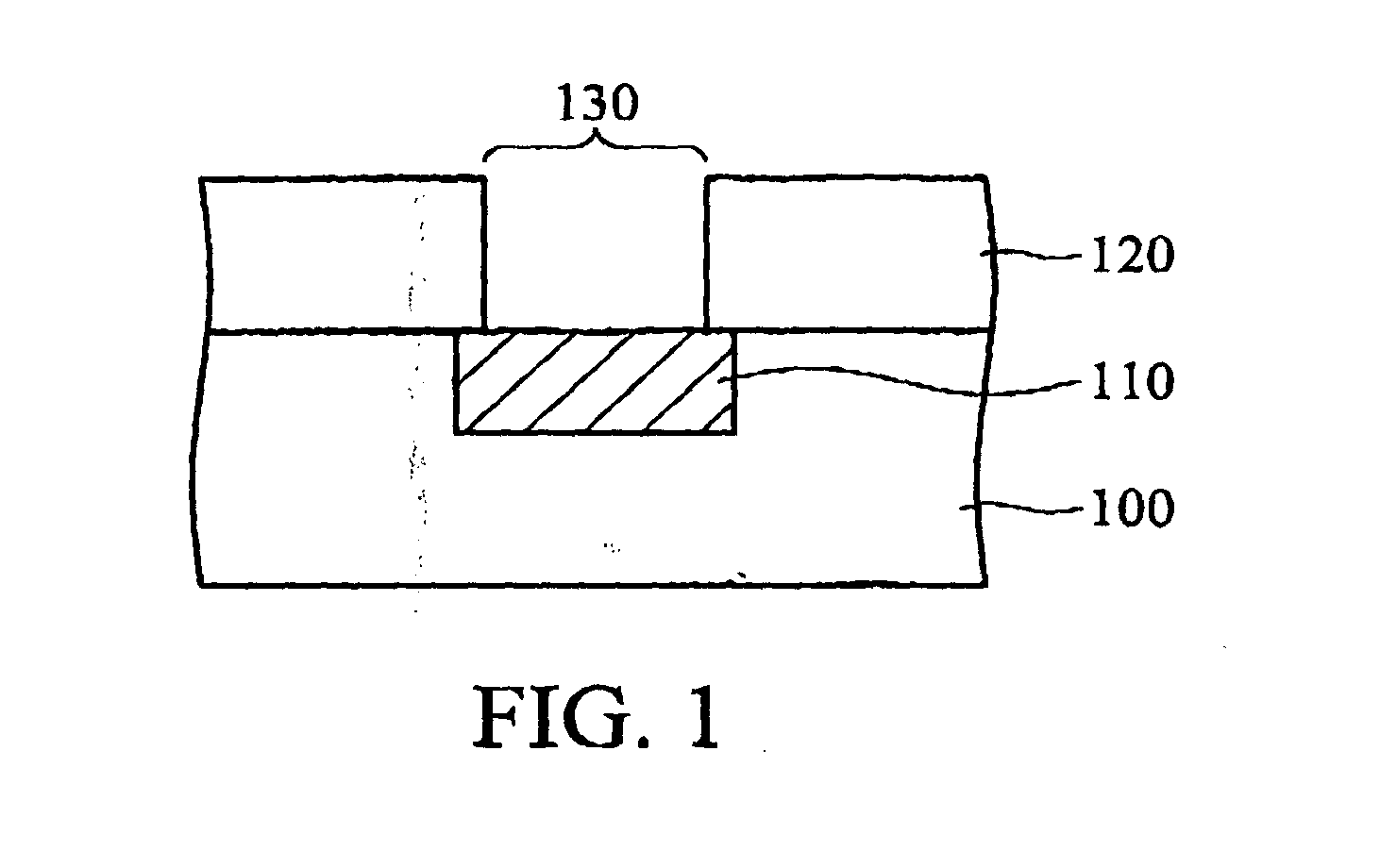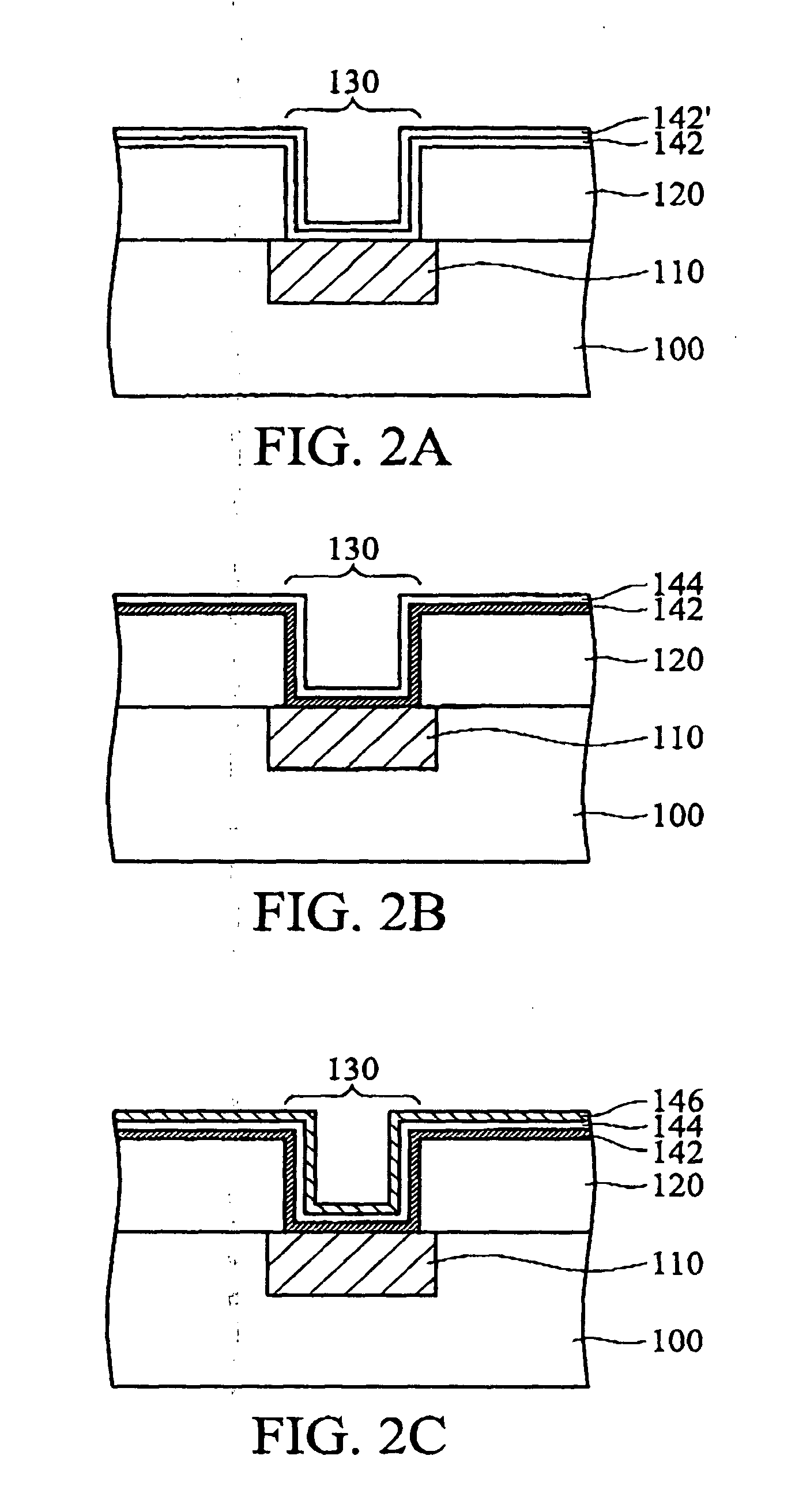Interconnect with composite barrier layers and method for fabricating the same
a technology of interconnection and barrier layer, which is applied in the direction of semiconductor/solid-state device manufacturing, basic electric elements, electric apparatus, etc., can solve the problems of low resistivity for faster signal propagation, loss of adhesion, delamination, etc., and achieve the effect of better adhesion
- Summary
- Abstract
- Description
- Claims
- Application Information
AI Technical Summary
Benefits of technology
Problems solved by technology
Method used
Image
Examples
first embodiment
[0026] First Embodiment
[0027]FIG. 1 shows a semiconductor substrate 100 such as a silicon substrate or silicon-on-insulator substrate (SOI). A contact region 110 is formed on the semiconductor substrate 100, such as a conventional MOS contact, interconnects and the like, which can be copper, aluminum, titanium, tantalum, tungsten, an alloy thereof, or a compound thereof.
[0028] As shown in FIG. 1, a dielectric layer 120 preferably having a planar upper surface is deposited overlying the substrate 100 and the contact region 110. The dielectric layer 120 is preferably composed of one or more dielectric depositions of silicon-containing or organic-based materials. Preferably, the dielectric layer 120 has a low dielectric constant (k), such as silicon oxide-containing material with a dielectric constant (k) not exceeding 3.5, more preferably 2.8 or below,. The preferred dielectric material is, but not limited to, organosilicate glass, fluorinated silica glass (FSG), organic spin-on glas...
second embodiment
[0040] Second Embodiment
[0041]FIG. 8 illustrates another embodiment of the invention, in which a two-level interconnect is formed by performing similar processes as in the first embodiment. As shown in FIG. 8, a low-k dielectric layer 120, e.g. k≦2.8, is deposited overlying a semiconductor substrate 100 with a first conductor 160 embedded therein. Preferably, a composite diffusion barrier layer 140 is interlaid between the conductor 160 and the first low-k dielectric layer 120, and the surface of the low-k dielectric layer 120 is below the surface of the first conductor 160 approximately 100 to 500 Å. An etch-stop layer 180 and a second low-k dielectric layer 190, e.g. k≦2.8, are deposited sequentially overlying the first dielectric layer 120. A second conductor 220 is embedded in the second low-k dielectric layer 190, connecting the underlying first conductor 160. The preferred width of the second conductor 220 is from 200 to 1000 Å. Preferably, a metal seed layer 210 and a composi...
PUM
 Login to View More
Login to View More Abstract
Description
Claims
Application Information
 Login to View More
Login to View More - R&D
- Intellectual Property
- Life Sciences
- Materials
- Tech Scout
- Unparalleled Data Quality
- Higher Quality Content
- 60% Fewer Hallucinations
Browse by: Latest US Patents, China's latest patents, Technical Efficacy Thesaurus, Application Domain, Technology Topic, Popular Technical Reports.
© 2025 PatSnap. All rights reserved.Legal|Privacy policy|Modern Slavery Act Transparency Statement|Sitemap|About US| Contact US: help@patsnap.com



